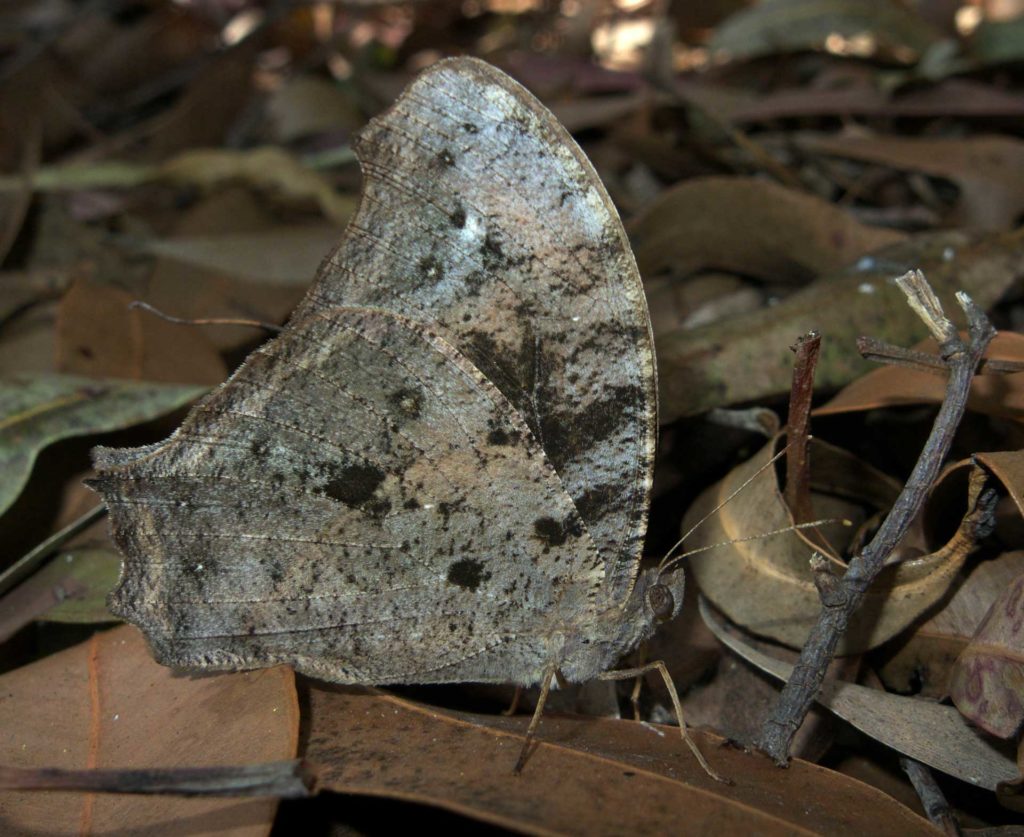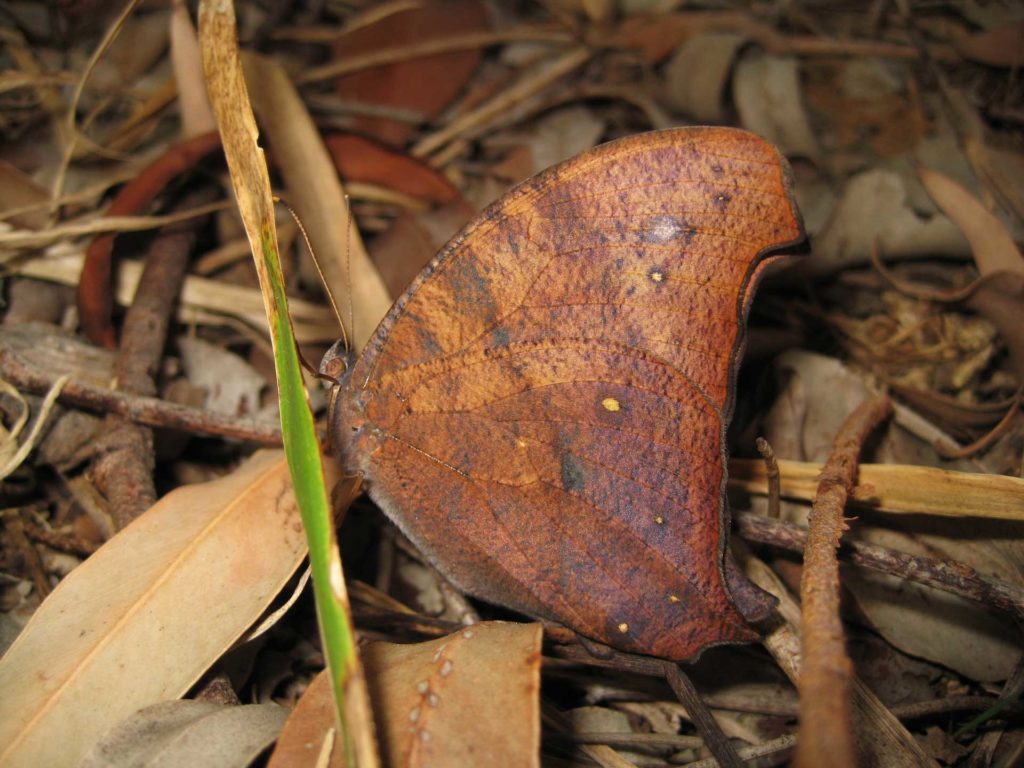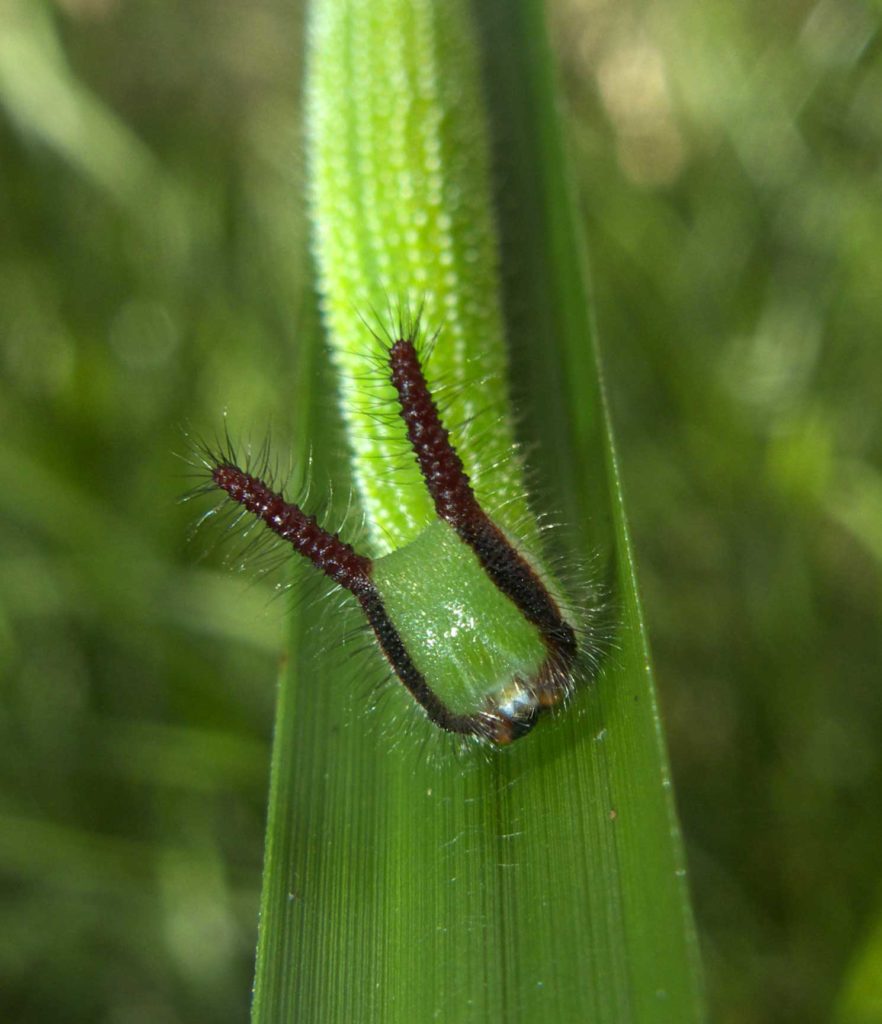Anyone that likes to observe butterflies knows that an overcast day is not a very productive time to do so. That’s because butterflies are ectothermic which makes them reliant on an external source of heat. By basking in the sun and warming their bodies, flight becomes more energy efficient. As a result almost all butterfly species are sun- lovers and are most active when the sun is shining. So sensitive are they that when the sun disappears behind a cloud they usually settle on vegetation and await its return.
Not all butterflies are sun-lovers though. The Evening Brown (Melanitis leda) is a species that you won’t see flitting about on a bright day. They are crepuscular, being active around dawn, dusk and into the evening. You’ll usually only see them during daylight hours if you are traversing through the forest undergrowth and disturb one resting on or near the ground. Return to the same area at dusk and you may witness the prolonged bobbing dance of a pair in courtship or males tightly circling each other and rising into the canopy as they battle over territory.

The Evening Brown is quite a large butterfly species that can be seen throughout the year in SEQ. Males have a wingspan of approximately 60mm with females larger at 63mm. Interestingly the adults have a wet-season (summer) form and a dry-season (winter) form, with the latter being larger and much more variable in colour and markings.
The wet-season form is seen from December to March, and with favourable Hiding in the Shadows – The Evening Brown fauna profile The various dry season forms of the Evening Brown have camouflaged markings providing some concealment during the inactive winter period. conditions several generations can be completed during this time. The multiple eye-spots of the wet-season form possibly offer some protection by deterring predator attacks during this active period. The dry-season form lacks these obvious eye-spots and combined with their varied brown markings have effective camouflage against a background of dead leaves. This concealment suits them well during a less active time when they are reproductively dormant and assumedly longer-lived.

While the majority of adult butterfly species feed on nectar from flowers, the Evening Brown has a preference for tree sap and fermented fallen fruit including those of the Creek Sandpaper Fig (Ficus coronata). They don’t limit themselves to sap and fermenting fruit though, on a couple of occasions I’ve even seen them feeding on freshly squashed, road-killed toads.
Females oviposit (lay eggs) during dusk on a variety of native and exotic grasses (Poaceae) and some sedges (Cyperaceae); larvae feed on the fresh leaf growth. Commonly used food plants in SEQ include Kangaroo Grass (Themeda triandra), Blady Grass (Imperata cylindrica) and Tall Sedge (Carex appressa).

Mature larvae are about 60mm in length and are impressive with distinctive facial markings and horns; the bright lime-green body is covered in short setae (hairs) arising from numerous white speckles. Despite being so distinctive and feeding in broad-daylight they are not easy to locate. The larva pictured is the only individual I’ve ever come across! Before pupating the larvae move to the lower part of the plant attaching themselves to the underside of a leaf with silk. The pupae are uniformly green, blending in well with the host plants they feed on. Pupation is as short as ten days during the warmer months.
How is the Evening Brown able to be active in such dull conditions while other butterfly species are very limited without direct sunlight to fuel them? One Australian study discovered, during dusk, that males maintained a thoracic temperature an average of 8.250C above the ambient temperature. While some species of insects use shivering to raise body temperature this has never been observed in the Evening Brown. Although no clear mechanism was found, a suggestion from the study was that heat created by flight itself could outweigh that lost by convective cooling. The densely hairy body of this species would assist in this retention of heat. More research needs to be done but it’s a good insight into how the physiology of the Evening Brown allows it to do things most other butterfly species cannot.
References & Further Reading
Australian Caterpillars and their Butterflies and Moths – http://lepidoptera.butterflyhouse.com.au
Braby MF (2015) The Complete Field Guide to Butterflies of Australia, 2nd ed. CSIRO Publishing.
Braby MF (2000) Butterflies of Australia: Their identification, biology and distribution, Vol 2.
CSIRO Publishing.
Brisbane Insects and Spiders – www.brisbaneinsects.com
Kemp DJ (2002) Visual mate-searching behaviour in the evening brown butterfly, Melanitis leda (L.)
(Lepidoptera: Nymphalidae). Australian Journalof Entomology 41, 300–305
Orr A & Kitching R (2010) The Butterflies of Australia. Allen & Unwin.
Article and photographs by Todd Burrows, Land for Wildlife Officer, City of Gold Coast
